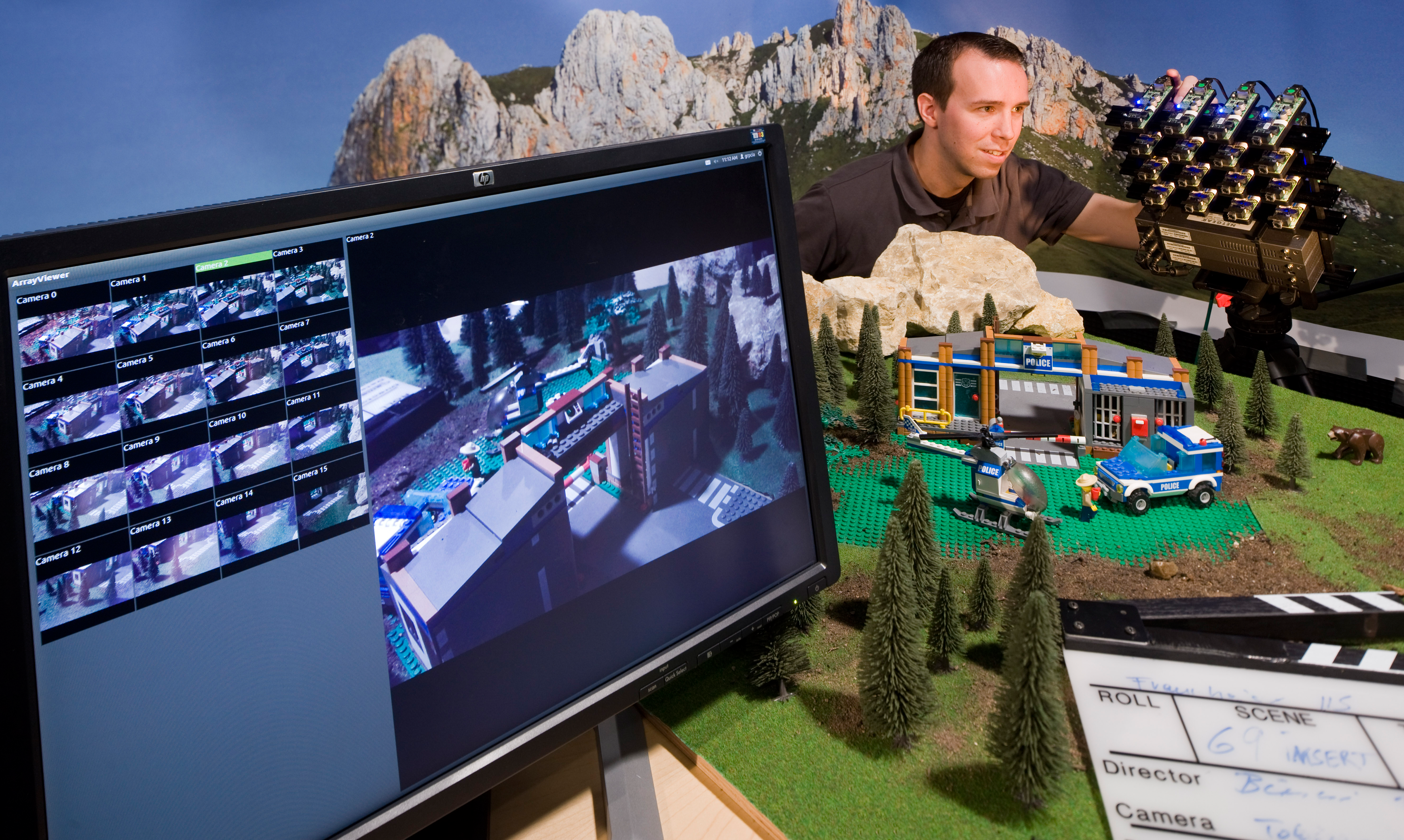With its numerous research areas Fraunhofer IIS is able to offer technologies and services to a broad field of markets. One of these markets is the fascinating, still evolving world of Virtual Reality.
VR technologies by Fraunhofer IIS
Virtual worlds created by Holodeck 4.0
The Holodeck 4.0 offers a variety of virtual worlds which are based on highly precise positioning technology and are created with the help of the Unity 3D Gaming Engine. Up to 40.000 square meters of virtual space are available to be explored for the most diverse scenarios, including the application areas production and logistics, architecture, gaming as well as safety and security.
Holodeck 4.0 users can move about freely. The system supports up to 100 transmitters, allowing multiple users to interact with each other and simultaneously discover the different virtual worlds.
Light field for VR Applications
Moving around in VR worlds has so far only been possible in computer-generated environments. 360 degree panoramas captured from real scenes limit the viewpoint to a fixed position. Light-field capturing and processing enable the user to change the perspective and viewpoint so that images from real environments can be used similar to computer generated scenes. The department Moving Picture Technologies at Fraunhofer IIS provides software for light-field computation that extends the usage of VR to real scenes.
